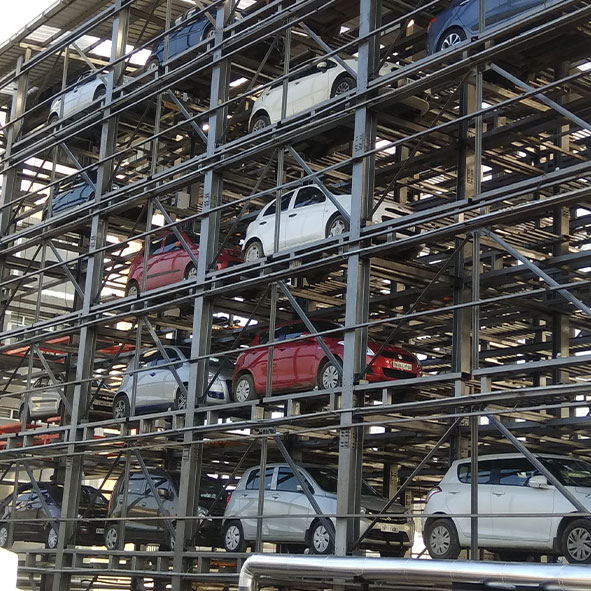Stacker Parking System: Revolutionizing Urban Parking Solutions
Parking challenges are a growing concern in urban areas. As cities become increasingly populated, finding adequate parking spaces is a daunting task. Enter the stacker parking system, a state-of-the-art solution designed to optimize parking efficiency while conserving space. This article explores the mechanics, benefits, types, and applications of this innovative system.
What is a Stacker Parking System?
The stacker parking system is a mechanical parking solution that allows multiple vehicles to be parked vertically or horizontally within the same footprint. Unlike traditional parking systems, stacker systems maximize space by stacking cars on multiple levels, making them ideal for areas with limited parking capacity.
These systems can be manually operated or automated, depending on the design and intended usage. They are commonly used in urban residential areas, commercial complexes, and public parking facilities to address space constraints.
How Does the Stacker Parking System Work?
The stacker parking system operates through mechanical or hydraulic lifts that move cars vertically or horizontally. Here’s a step-by-step look at its functionality:
- Vehicle Entry: The driver parks the car onto a platform or lift designated by the system.
- Lifting/Stacking Mechanism: The system raises or moves the platform to create space for the next vehicle.
- Vehicle Retrieval: When needed, the system retrieves the car by lowering or moving the platform back to ground level.
Advanced versions of the system utilize automation and sensors for seamless operation, enhancing user convenience.
Types of Stacker Parking Systems
Stacker parking systems come in various configurations, tailored to meet different needs.
1. Two-Post Parking Lifts
These are basic systems that stack one car above another using hydraulic lifts. They are popular in residential areas and small parking lots.
2. Four-Post Parking Lifts
Offering enhanced stability, four-post lifts are suitable for heavier vehicles and high-capacity requirements.
3. Puzzle Parking Systems
A semi-automated solution, puzzle parking systems allow horizontal and vertical movement of platforms, offering more flexibility in space usage.
4. Fully Automated Parking Systems
These high-tech systems use robotics to manage parking and retrieval, eliminating human intervention. They are ideal for high-density urban areas and luxury facilities.
Benefits of Stacker Parking Systems
The stacker parking system offers a myriad of advantages, making it a preferred choice for urban spaces.
1. Space Optimization
By utilizing vertical space, stacker systems significantly reduce the area required for parking, allowing developers to make better use of available land.
2. Cost-Effective Solution
Compared to building large parking structures, stacker systems are more economical and require less maintenance.
3. Environmentally Friendly
Reducing the need for sprawling parking lots minimizes urban sprawl and preserves green spaces, contributing to sustainable city planning.
4. Improved Accessibility
Automated systems provide quick and hassle-free access to vehicles, enhancing user convenience.
5. Increased Safety
By organizing cars in a structured manner, stacker systems minimize the risk of damage and theft, offering peace of mind to users.
Applications of Stacker Parking Systems
Stacker parking systems are versatile and can be integrated into various settings:
- Residential Buildings: Address parking shortages in urban apartments and condos.
- Commercial Complexes: Maximize parking capacity for office buildings and malls.
- Hospitals: Provide efficient parking for medical staff and visitors.
- Public Parking Facilities: Offer scalable solutions for city parking requirements.
Challenges and Considerations
While stacker parking systems offer numerous benefits, they also come with certain challenges:
- Initial Investment: The upfront cost of installation can be high, although the long-term savings often outweigh this.
- Maintenance Requirements: Regular maintenance is crucial to ensure smooth operation and prevent mechanical failures.
- User Training: In semi-automated systems, users may need training to operate the system efficiently.
Future of Stacker Parking Systems
The rise of smart cities and the growing emphasis on sustainable urban development have propelled the adoption of stacker parking systems. Future innovations may include:
- Integration with IoT: Real-time monitoring and management through smart sensors and apps.
- Renewable Energy Sources: Systems powered by solar or wind energy.
- Enhanced Automation: Incorporation of AI to predict parking patterns and optimize operations.
Conclusion
The stacker parking system is a game-changing innovation that addresses the pressing need for efficient and sustainable parking solutions in urban areas. By maximizing space, reducing costs, and enhancing convenience, this system is paving the way for smarter cities and better living environments.
Investing in stacker parking systems is not just a solution to current parking woes but a step toward a more sustainable and efficient urban future.



